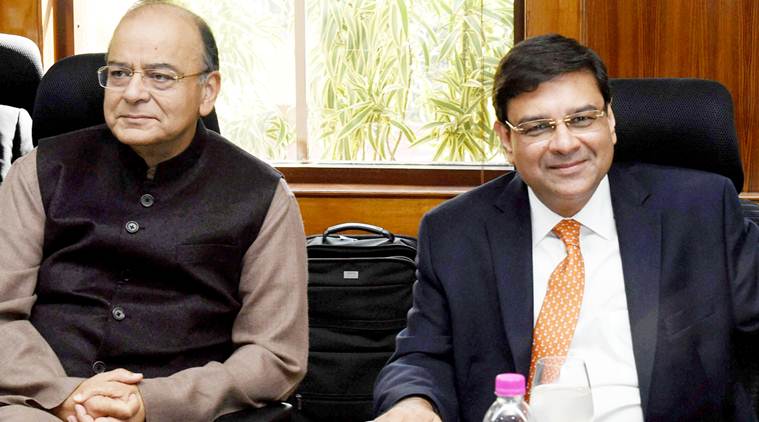Friction is good
But RBI-government relationship needs to be managed in a changed macroeconomic policy regime.

With monetary policy having gaining supremacy and “outsiders” to the fisc culture and the services fraternity appointed governors, a heady mix has been brewing that can destabilise the relationship. (Photo” PTI)
By all accounts, today’s meeting of the central board of Reserve Bank of India (RBI) will be a charged and stressful affair. The media is agog, markets are on edge, government is apprehensive, and the nation wants to know! To lighten the national mood, an anecdote from the past may help.
The governor was meeting a visitor in his office chamber in Mumbai when he got an obviously important phone call. The call was brief and rather brusque. The visitor, sitting in the room, couldn’t help overhearing the conversation. It went like this: “No no no Yes no no no.” Curious to know, he enquired from the governor what this was about. The governor replied, rather casually, that it was a call from the Union Finance Minister, who was making some suggestions.
One doesn’t have to be a monetary policy expert to understand that the governor was in complete disagreement with the minister. However, the visitor was curious to know that amid a volley of “Nos” what did the governor say “Yes” to. The governor quipped that the FM had asked him: “Can you hear me?”
What this anecdote tells you is that the current bout of disagreements between the Government of India (GOI) and the RBI is neither the first nor will it be the last. At least one hopes it will not be the last! Robust and rounded economic policy emerges only out of disagreements, discussion and a consensus.
The two institutions are structurally positioned to have disagreements; such is the nature of their role and responsibility. For, shorn of all its complexity, at the end of the day, it is a relationship between a lender and a borrower; an owner and a manager, a market maker and a regulator. There is a natural tension built into all these relationships.
Where the current episode of friction is different from all the earlier ones is that it has been brought into the public domain in a manner that lacked maturity and sagacity. This is most unfortunate. It positions the issue in a very dangerous “either-or” dichotomy — autonomy of an institution versus sovereignty of the country.
The issue of autonomy of the RBI is real. It is not about the ego or intransigence of an individual. To see it like that is trivialising the issue. Institutional decision-making autonomy of the RBI is a prerequisite, indeed a necessity for the economic system to function in a sustainable manner. The autonomy accorded to the RBI by the sovereign has to be structured through institutional mechanisms, a framework of decision-making. In fact, over the last few years, there has been a decisive move towards this. The current call by the RBI to “stay off my turf” comes in that backdrop.
The RBI has, only recently, in 2016, put in place a Monetary Policy Committee (MPC). Till two years back, be it a rate cut of a hike in the CRR, it was all about the nod from the governor. On many an occasion, even deputy governors handling portfolios besides monetary policy weren’t aware of the final decision. It is the incumbent governor who designed the MPC when he was deputy governor in charge of monetary policy. In this set-up, the government not only got a formal voice and vote in the key decision-making of the RBI but also made the RBI accountable to the GOI thereby curtailing the absolute powers of the governor and his team. These are healthy developments.
Indeed, one silver lining in this otherwise sordid episode of public wrangling is that the RBI board appears to have become active and is trying to assert itself. There is nothing wrong in this per se. Of course, it is not proper for board members to air their views in public or for them to assert only on the back of a diktat.
For the board to be now engaging the RBI management on substantive monetary policy issues is a positive development for the RBI, government and the country. Indeed, it is their mandate to “govern the affairs of the Reserve Bank”. The board, without getting into operational matters, must discuss and decide on the overall policy direction. Instrumentalities of implementation and action rest with the RBI management.
There have been eminent men and women on the board who have contributed to building the institution. But the tradition has been such that they need not have been on board on many of the key decisions. This is not to suggest that governors in the past ran amok or rough shod over the members of the board. The RBI, as an institution, has been very fortunate to have had governors with great intellectual and personal integrity. The fact remains that for the longest period the RBI has been advocating, and of late enforcing, strict corporate governance in banks without really following it itself.
The moot point is that the relationship between the RBI and GOI needs to be managed in the context of a completely changed macroeconomic policy regime. Earlier, fiscal policy was driving the economy. Monetary policy would adjust to it. For the most part, India has followed an accommodative monetary policy. Now, in an increasingly market driven economy, monetary policy has become the dominant force for policy interventions. This has set the stage for assertive monetary policy interventions.
The time-tested bureaucratic way of managing the relationship was to appoint a retired finance secretary as the RBI governor. A look at the list of the two dozen former governors bears this out. These dyed-in-wool civil servants were all “schooled” in the compulsions of the fisc. And to be sure, in the great civil services protocol, the RBI governor would be senior to the finance secretary in the IAS hierarchy. They would always “Sir” him even as the joint secretary (banking) would occasionally nibble at the heels of the governor! Which is why even though there has never been any security of tenure for the governor, no RBI governor has ever been sacked. The system was in a steady state equilibrium.
With monetary policy having gaining supremacy and “outsiders” to the fisc culture and the services fraternity appointed governors, a heady mix has been brewing that can destabilise the relationship.
In this situation, it seems wiser to take a holistic view of the changed context and emerging dynamics of the interface between the two. There is a need to strengthen the governance framework in the bank further along with building a layered channel of interaction and communication from below. Today, the relationship is totally “top down”. This needs to be reversed and made “bottom up” with a proper escalation matrix. This will insulate it from two perpetual threats: Politicisation and inter-personal relations.
A panel of experts can be set up to make recommendations on these issues. They will do well to be guided by what former RBI governor Y V Reddy said in his own inimitable style. In 2008, on being asked if he was independent, he replied, “I am very independent and I have the permission of my finance minister to say so!”
The writer is the former finance minister of J&K






































No hay comentarios:
Publicar un comentario